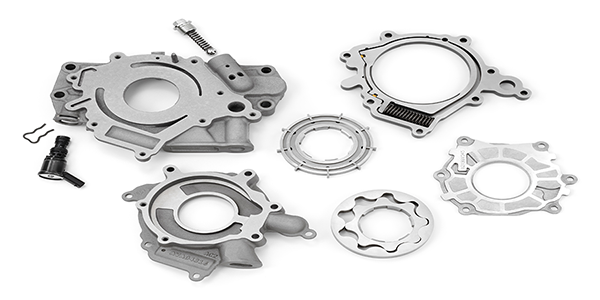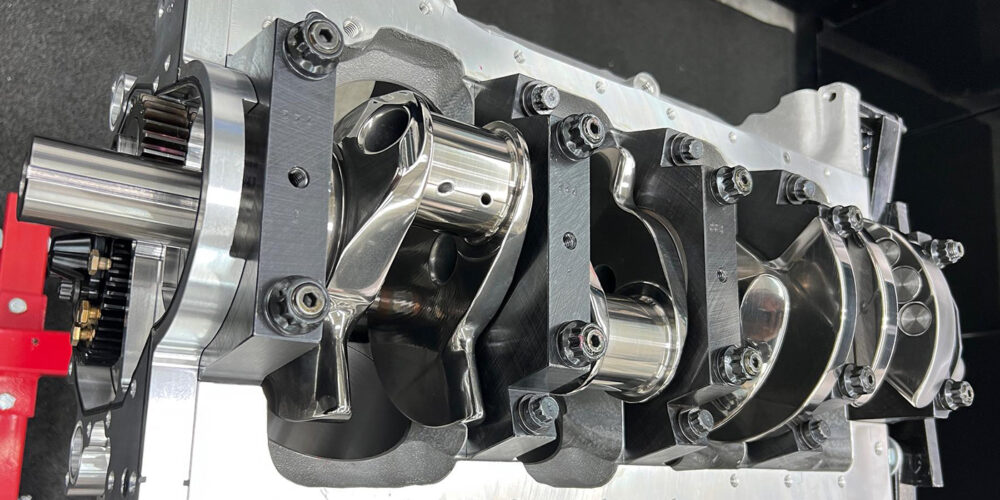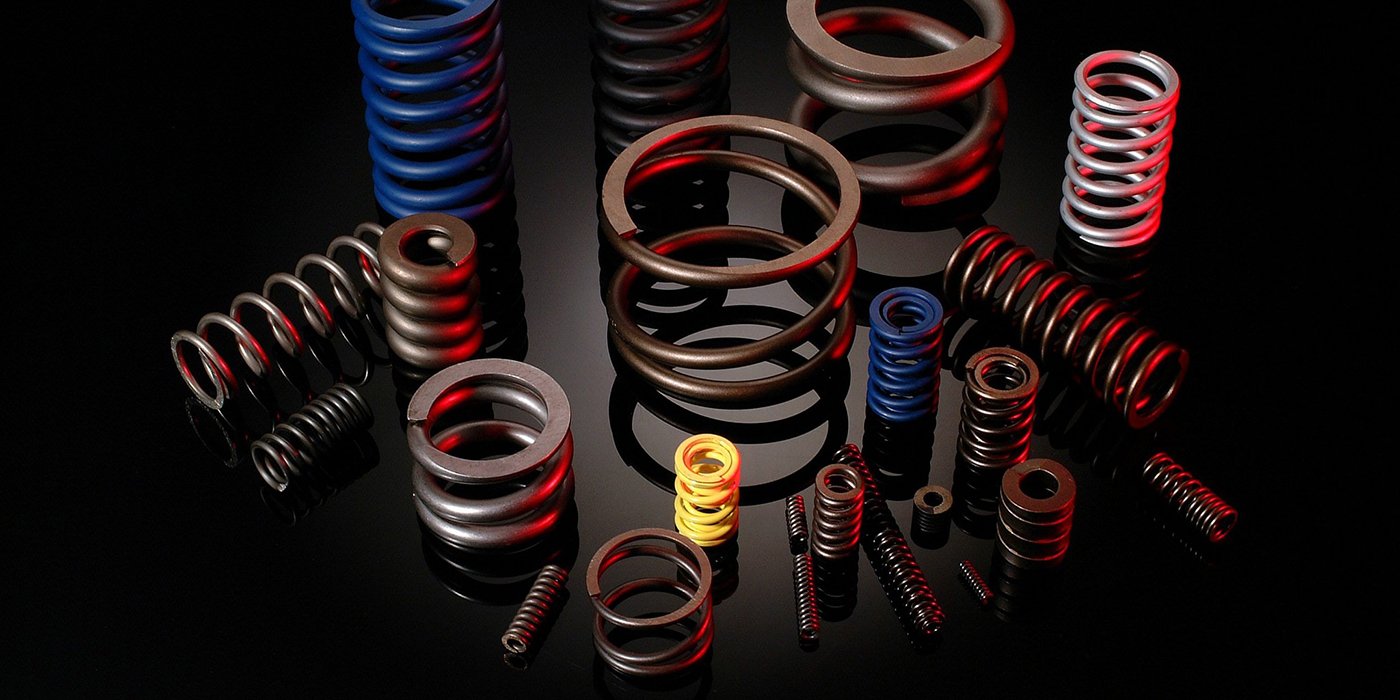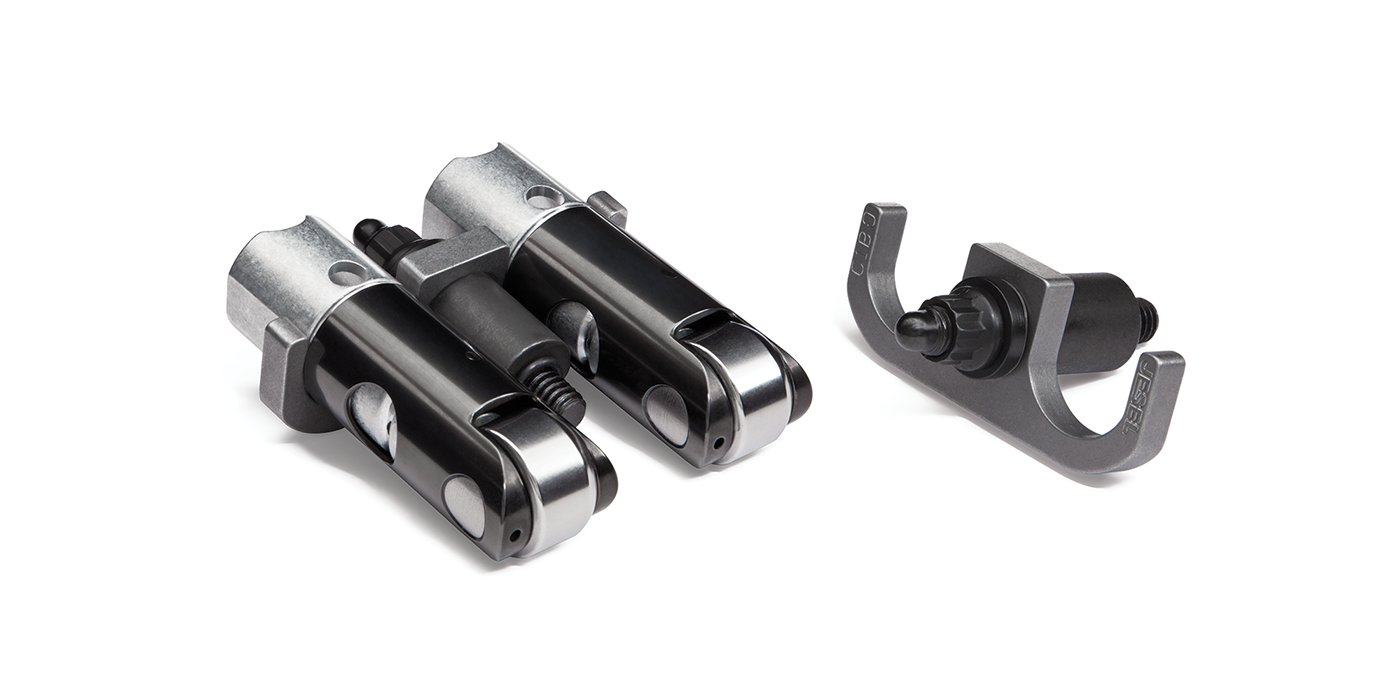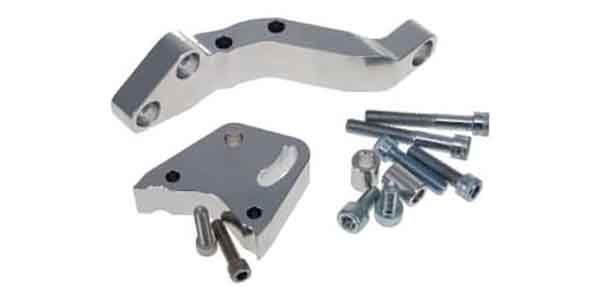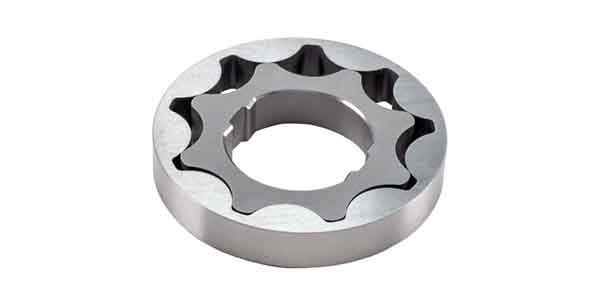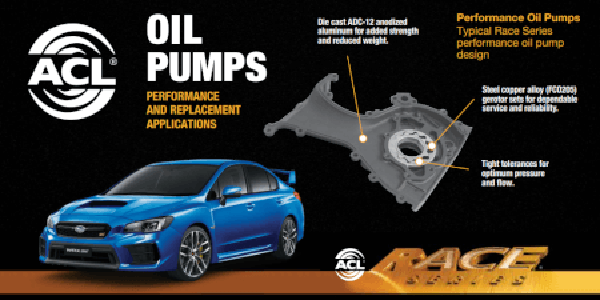The Right Oil Pumps and Systems Keep Your Engines In Harmony
This month we’re going to take a look at the component that can be considered the heart of your engine, the oil pump. Whether it’s a wet sump, dry sump, crank-driven, shaft-driven, etc. it is responsible for supplying the required oil that no engine can operate without. Oil pump technology has been around a long time but there are still many types available and different delivery systems as well as some new technology in the works to meet different needs.
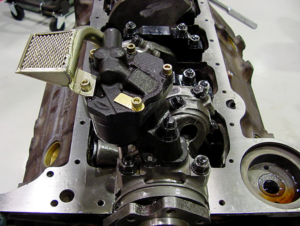
Wet Sump Systems
The familiar wet sump systems are used in the majority of street driven vehicles and many competition engines also. Wet sump designs retain the oil in the oil pan’s sump area. The sump is the lowest part of the pan and it can be located at the rear, front or some even have it placed in the center of the pan depending upon the type of engine and chassis configuration that it has to provide clearance for and still hold enough oil to properly lubricate the engine. The pickup for the pump is located in the sump area and submerged in the oil in order to provide a constant flow to the oil pump.
As the oil is pumped through the engine and reaches the valve train area, it drains back into the pan through various holes and channels located in the block and cylinder heads to maintain a continual circulation process while the engine is running. There is also a certain amount of splash oiling that occurs to keep moving parts properly lubricated and cooled during operation.
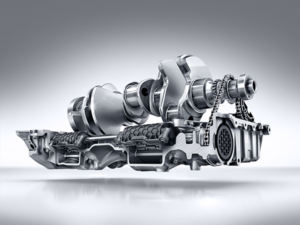
The two types of pumps used in modern engines are the twin gear and gear-rotor (also referred to as a gerotor pump) for wet sump systems. The twin gear pump is usually mounted inside the oil pan of the engine (there are some applications that use an external mounted pump or one that is housed inside the timing cover) and utilizes intermeshing gears to pump the oil. These pumps are commonly driven by a shaft that connects to the camshaft or distributor shaft and, in this configuration, the pump operates at half of the engine speed. One gear is driven by the connecting shaft and the other gear is positioned on a fixed stud in the pump housing and driven by the shaft mounted gear. These gears turn in opposite directions which traps oil between the gear teeth and pushes it around the outside of each gear by drawing oil from the pickup in the sump and moving it up into the engine.
Gerotor pumps have two gears also, but instead of intermeshing together, one gear is mounted inside of the other. During operation the inner gear spins inside the outer, which causes it to operate at about 75%-80% of the
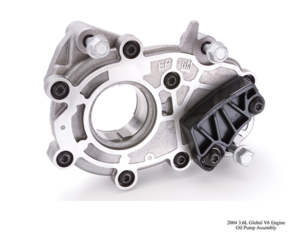
inner gear speed. This creates the suction that draws oil from the pickup and pushes it into the engine. Gerotor pumps can be located inside the oil pan or mounted externally. They also can be shaft driven like a twin gear but many applications that utilize these pumps, such as the GM LS and Ford modular engines, drive them with the crank snout.
Advantages of a wet sump system are simplicity, cost effectiveness, ease of installation and numerous aftermarket options in regard to performance upgrades. Disadvantages could be stated as windage and cavitation issues, however aftermarket manufacturers have gone to great lengths to provide products that address these problems. While neither of these should be a big concern for your grandfather’s Buick, when we enter the performance realm where engine output and rpms increase substantially, they must be taken into consideration.
Windage can affect engine operation and oil pump function in several ways. At high rpms the crankshaft is throwing around some of the oil that is draining from the engine back into the pan against the block and cylinder walls, causing it to absorb heat and raising the oil temperature. While it is being thrown about. the oil can become aerated and the resulting air bubbles can reduce its ability to dissipate the heat, which further affects oil temperature. Aeration in the oil makes the pump work harder to try and move it. Topping all of this off is the thick mist of air and oil created in the pan that places drag on the crankshaft as it tries to spin through it and causes power loss.
Pan manufacturers have been creative in their attempts to combat windage. Oil pans are available with features such as additional baffling (some have trap door baffles that also help contain oil in a concentrated area around the pickup), screened or louvered windage trays that help to somewhat isolate the crank from the oil in the pan and crank scrapers, which help control the amount of oil that is thrown off the crankshaft and rods.
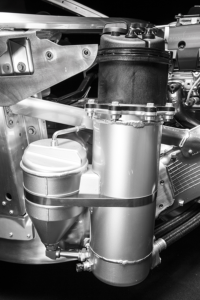
Another thing that should be done is to check the oil level – having too much oil in the pan can cause windage issues to occur. Some racers closely control the amount of oil they put in the engine and will use an accumulator bottle as added insurance against pressure loss by supplying extra oil if needed. If you have installed other items, such as an oil cooler or remote filters for example, the extra capacity required to fill the component and lines should be figured in to ensure you have the correct amount of oil that the engine needs.
There are other factors that come into play in regard to achieving the best balance of operating oil capacity as well. An example of this concerns stroker cranks: the counterweights are larger and therefore extend deeper into the oil pan. Spending some extra time determining exactly how much oil your engine needs is well worth the effort.
The second area to address is oil pump cavitation. This occurrence isn’t as prevalent with a gerotor style pump as it is with a twin gear but it can still
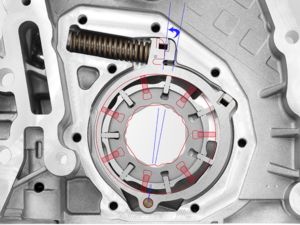
take place at high rpms. Cavitation occurs when the pump is spinning faster than the oil can flow into and out of it. When this happens small bubbles form on the gears that aerate the oil and as these bubbles implode they can cause erosion of the internal surfaces of the pump in conjunction with the fact that the pump isn’t moving as much oil as it should and can cause a loss of pressure.
The manufacturers have made great strides in developing products to reduce cavitation, flow and aeration problems in high performance applications. Melling offers the Shark Tooth pump for small block Chevrolets that has helical asymmetrical gears to improve the flow of oil and has introduced performance pumps for Ford modular engines and a new lower pressure pump to address issues in aftermarket LS blocks that employ priority main oiling.
Schumann Sales & Service has several series of pumps available with various modifications and improvements to target the needs of specific volume, pressure and operational characteristics of many different engines as well as the patented ER-Vac technology.
Pro/Cam has kits that include performance pumps and pickups along with oil pans to provide fully matched components for high performance and competition applications.
Milodon and Moroso both have performance pumps that offer all the features needed to handle high output configurations for many different engine brands. Today’s oil pumps include features like anti-cavitation grooves, enlarged pickup openings, housing designs, adjustable pressure settings and many others, all developed to allow wet sump systems to perform the task of keeping performance engines properly lubricated in extreme operating conditions.
Most wet sump pumps for performance engines are available in billet aluminum also, which can provide additional benefits in terms of larger mounting bosses to deter breakage and increased inlet areas due to not having to use a separate pickup pressed/bolted to the pump.
A Few Wet Sump Pump Installation Tips
•Always double check the height of the pickup to the bottom of the pan: 1/4˝ to 1/2˝ is the range you want to be in but never go more than 1/2˝ on this distance.
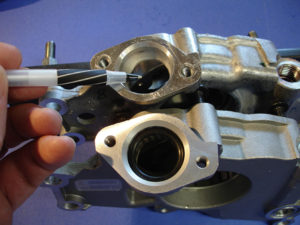
•When installing the intermediate shaft in a Chevrolet, always use one that has the slot and the tang clocked at 90-degrees apart from each other. The main purpose of the intermediate shaft is to transmit rotational energy from the end of the distributor to the oil pumps drive shaft. These two components are mounted separately and a distance apart resulting in a mis-alignment of the shaft centerlines. The secondary purpose of the intermediate shaft is to provide for the mis-alignment of those components. If not clocked correctly it will create a significant bind in the intermediate shaft from the mis-alignment between the distributor and oil pump shaft, which can lead to breakage in this area.
•Another place to turn your attention to is the sealing surfaces between the main cap and pump body. These are both machined surfaces and are intended to be perfectly flat in order to seal against each other, but sometimes there can be imperfections, which allow a pressure leak. Copper gaskets are available that will solve this issue if you find a mis-alignment that can’t be corrected with a minimal amount of effort.
Dry Sump Systems
Dry sump systems differ from a wet sump by containing the oil in a separate tank outside of the engine instead of in the oil pan. There are at least two pumps with a dry sump, one of which pulls the oil from the pan sump and sends it to the tank while the other pumps oil from the tank back into the engine. Additional stages can be added to the pump in order to remove the oil from multiple locations of the engine and pump it to the oil tank. This design allows the vehicle to operate with the minimum amount of oil actually contained in the engine.
With this type of system, overall capacity can be greatly increased because the external tank can hold a much larger volume than the oil pan. It also allows for finer adjustability of the oil pressure and the pump can be mounted on either side of the engine to accommodate any clearance issues.
The drawbacks to a dry sump are increased weight, cost and complexity of installation. However, it can provide great benefits in terms of performance. Since there is no oil contained in the pan, the crankshaft can rotate freely without any parasitic losses. Turning, braking and acceleration doesn’t affect it the same as with a wet sump because the oil doesn’t slosh around in the pan to contact the crank or uncover the pump pickup.
Because the pan isn’t required to contain the oil, it can be reduced in size, which allows the engine to be mounted lower in the chassis and helps with the center of gravity. A dry sump also helps make more power by producing additional crankcase vacuum that promotes better ring sealing.
Whichever type of oiling system is best for your engines, today’s components can provide you and your customers with better control of the life blood (oil) flowing through it by giving it just a little bit of attention. Every little bit helps because you have to remember that too much horsepower is just enough!

